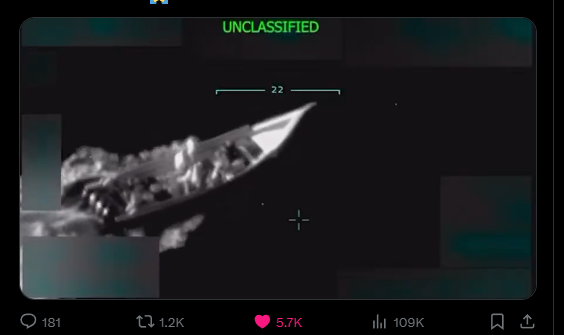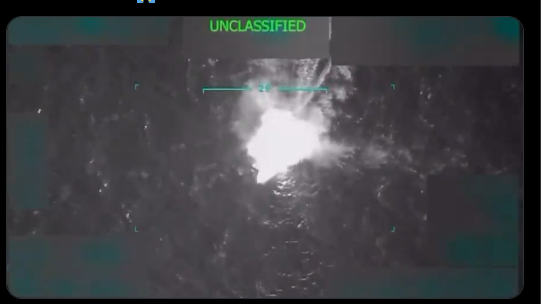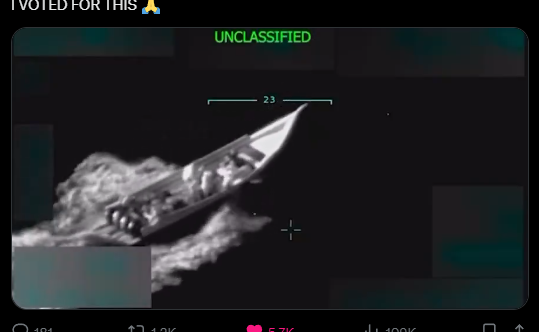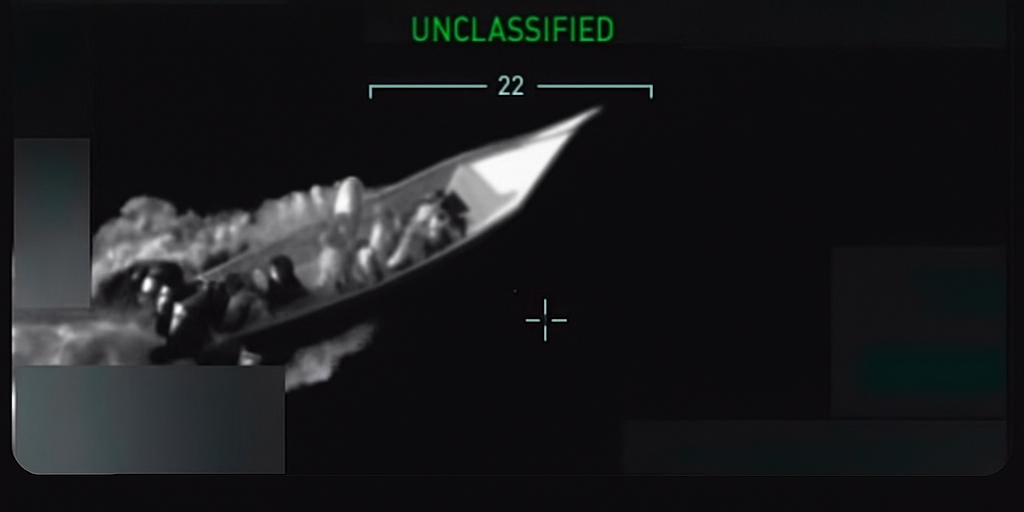President Trump Declassifies Video of U.S. Forces Striking Narco-Terrorist Boat in Caribbean Operation
This morning felt like one of those moments that mark a shift in history. Out of nowhere, President Donald Trump announced that he was declassifying video footage showing the U.S. military striking a narco-terrorist vessel. Within minutes, the clip was circulating online, and people around the world were staring at grainy, infrared images of a boat racing through the dark waters, followed by a sudden eruption of force. It wasn’t just another political statement. It was a direct release of proof, raw and unfiltered, from the Commander-in-Chief himself.
According to Trump, the strike was carried out against a drug-running vessel linked to Venezuela’s notorious Tren de Aragua gang. These are not ordinary criminals, but an organization that the U.S. has labeled as a narco-terrorist network, accused of trafficking and spreading violence across the region. The president explained that this was a “kinetic strike” in international waters, carried out under U.S. Southern Command. Eleven individuals aboard the boat were killed, and no American forces were harmed. The language was firm and the message clear: anyone thinking of smuggling drugs into the United States would now have to think twice.

The video itself was both haunting and captivating. Black-and-white frames captured the vessel cutting across the water, packed with figures, before being locked into crosshairs. The screen flashed the word “UNCLASSIFIED” at the top, signaling that the world was now seeing something rarely shared so quickly after an operation. For many, it was startling to see a military strike presented directly to the public, not filtered through news reports or buried in classified documents. Trump’s decision to put it out there himself was as much about shaping the narrative as it was about transparency.
Secretary of State Marco Rubio reinforced the announcement, describing the strike as a necessary step against a dangerous organization. He reminded the public that the U.S. had long promised to act against these networks, and now the proof was in front of everyone. It wasn’t just words—it was action caught on camera. In Washington, the move was framed as both a counter-narcotics mission and a signal to hostile groups who underestimate American resolve.

Of course, not everyone saw it the same way. In Caracas, Venezuelan President Nicolás Maduro condemned the strike, accusing the United States of violating sovereignty and calling it an act of aggression. He denied any ties between his government and the gang, and state-run media framed the attack as imperialism in action. But even his angry words struggled to compete with the imagery that was already seared into global attention: a boat, identified as belonging to traffickers, obliterated in international waters under U.S. command.
As I sat and watched the video again, I couldn’t shake the feeling that this was more than a single military operation. It was a carefully timed message. By declassifying and releasing the footage, Trump was speaking directly to both the American public and to anyone operating in the drug trade. The statement was blunt: there will be no hiding, no second chances, and no tolerance.

It was also a reminder of how quickly narratives move in today’s world. What once would have taken weeks to surface through official reports was instead shared in real-time by a sitting president. It made the public part of the event, letting us see exactly what leaders and generals were seeing. That immediacy is powerful—it shapes opinion, fuels debate, and leaves little room for doubt about what happened.
This morning’s footage will likely be replayed and analyzed for weeks, but the immediate impact is clear. Trump wanted the world to know that the fight against narcoterrorism is active, aggressive, and uncompromising. The imagery did more than any speech could—it made the stakes visible, and it left no room for misunderstanding. Whether praised as decisive or criticized as provocative, the declassified strike video will be remembered as one of those moments where a president bypassed the usual channels and let the world see exactly what was happening, in real time.

